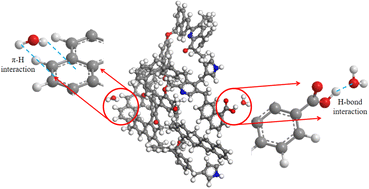Study on the surface wetting mechanism of bituminous coal based on the microscopic molecular structure
Abstract
The chemical wet dust removal method is one of the hot methods for coal dust control, and the key to its success lies in whether the surface of coal dust can be well wetted or not. Nowadays, the wetting mechanism of the coal dust surface is understudied, limiting the further application of chemical wet dust removal. Thus, the exploration of the wetting mechanism based on the microscopic molecular structure characteristics of the coal surface provides a new solution to improve the wet dust removal efficiency. Herein, the bituminous coal collected from 3 groups of coal seams in the Pingdingshan mining area was used as the object of study to reveal the microscopic wetting mechanism. Proximate analysis, nuclear magnetic resonance carbon spectroscopy (13C NMR) and X-ray photoelectron spectroscopy (XPS) can well distinguish the microstructural information of the coal surface, enabling building the molecular structure models of three groups of coal. Joint contact angle experiments were conducted to explore the influencing factors between the molecular structure of coal dust and its wettability. Molecular simulation techniques, combined with indoor experiments, were used to explore the essential causes of the differences in the wetting mechanisms of bituminous coal dust. The results showed that the composition and structure of carbon and oxygen elements on the coal surface has a significant effect on the wettability of coal dust. The higher the relative content of aromatic carbon and oxygen elements, the better the wettability of the coal surface. An opposite trend occurred for the aliphatic carbon. The difference in wettability of coal surfaces mainly stems from the ability of hydrophilic functional groups on coal surfaces to form hydrogen bonds with water molecules. The aromatic hydrocarbon structure has a much greater ability to adsorb water molecules than the aliphatic hydrocarbon structure. The research results can provide scientific guidance for the design of efficient and environmentally friendly dust suppressants to realize clean coal production in mines.



 Please wait while we load your content...
Please wait while we load your content...